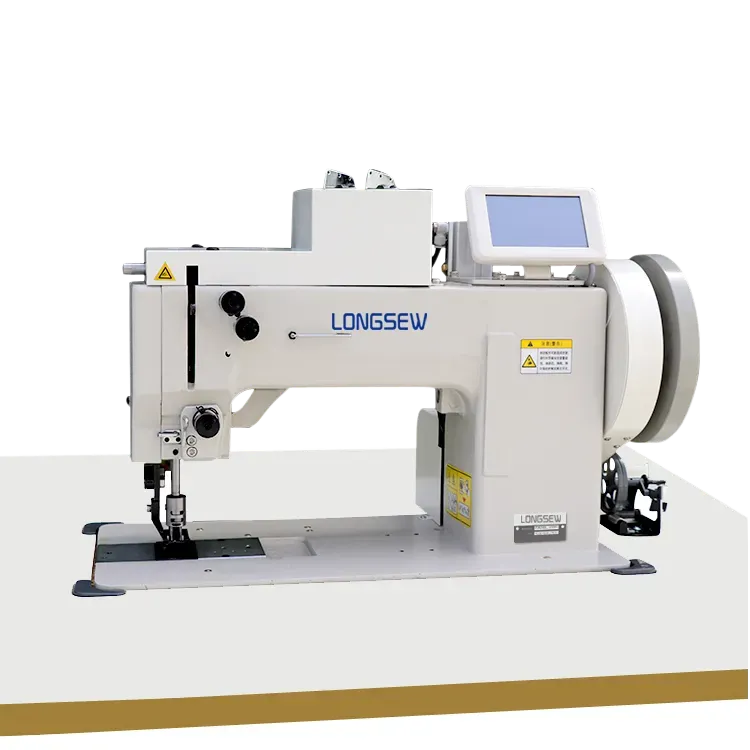Advanced Techniques for Operating Sewing Machines for Leather Crafting and Stitching Projects
The Evolution and Importance of Stitching Leather Machines
Leather crafting has been an integral part of human civilization for centuries. From functional clothing to luxury goods, leather products have always held a special place in our lives. The precision and durability of leather goods are often attributed to the stitching process, which has evolved remarkably over the years, thanks to advancements in technology. One of the most significant developments in this area is the creation of stitching leather machines.
Historical Context
The journey of leather crafting began with manual stitching techniques, which relied heavily on human skill and labor. Craftsmen used needles and thread to meticulously stitch leather pieces together, a process that was time-consuming and often inconsistent in quality. As industrialization took hold in the 19th century, the introduction of sewing machines began to revolutionize various textile industries, including leatherwork. Mechanical innovations allowed for faster and more consistent stitching, improving the overall quality and output of leather products.
The Modern Stitching Leather Machine
Today, stitching leather machines are engineered specifically to handle the unique challenges posed by leather. Unlike regular fabric, leather has different thicknesses, textures, and characteristics that require specialized tools and techniques. Modern machines employ advanced technology such as walking feet, which assist in evenly feeding the leather through the machine. This is particularly important as leather can often be bulky and may not glide smoothly like other materials.
These machines are equipped with powerful motors that allow for higher speeds and heavier stitching capabilities. Additionally, specialized needles and threads designed for leather stitching ensure that seams are not only strong but also aesthetically pleasing. Many machines now offer computerized controls, allowing users to program complex stitching patterns with precision, which is crucial for creating intricate designs in high-end leather goods.
Applications and Versatility
stitching leather machine

Stitching leather machines find their place in a variety of applications, from the production of fashion items like handbags, wallets, and belts to industrial uses such as automotive interiors and furniture upholstery. The versatility of these machines means they can accommodate various types of leather, including vegetable-tanned, chrome-tanned, and suede, among others.
In the fashion industry, for instance, the rise of bespoke and artisanal leather goods has seen a resurgence in the need for high-quality stitching machines. Craftspeople and small manufacturers are increasingly turning to these machines to maintain a balance between traditional craftsmanship and modern efficiency. The ability to produce durable and aesthetically appealing leather products in shorter time frames is invaluable in today’s fast-paced market.
Challenges and Future Developments
Despite their advantages, stitching leather machines come with challenges. The initial investment can be substantial, and maintenance is critical to ensure longevity and optimal performance. Moreover, as the industry moves toward sustainable practices, there is a growing demand for machines that minimize waste and operate with eco-friendly materials.
Looking to the future, innovations such as automation and artificial intelligence could further revolutionize the stitching process. The incorporation of smart technology could lead to machines that not only learn from user input but also predict potential operational issues, ultimately reducing downtime and increasing productivity.
Conclusion
Stitching leather machines play an essential role in both traditional and modern leather crafting. As technology continues to advance, these machines are likely to become even more sophisticated, blending the lines between traditional craftsmanship and modern manufacturing processes. Their evolution not only enhances the quality of leather products but also supports a growing industry dedicated to creating durable, sustainable, and stunning leather goods. As we look ahead, the future of stitching leather machines appears promising, paving the way for new possibilities in leather craftsmanship.
-
Leather Sewing Machine: The Industrial Standard for Tough MaterialsNewsJul.18,2025
-
Sail Making Machine: Heavy-Duty Stitching for Industrial and Marine NeedsNewsJul.18,2025
-
Sling Sewing Machine: The Backbone of Heavy-Duty FabricationNewsJul.18,2025
-
Leather Sewing Machine: Precision for Heavy-Duty StitchingNewsJul.18,2025
-
Big Bag Sewing Machine: Powering the Future of Bulk PackagingNewsJul.18,2025
-
FIBC Sewing Machine: Essential Equipment for Bulk Bag ProductionNewsJul.18,2025
-
Heavy Duty Leather Sewing Machine: A Must-Have for Professional LeatherworkNewsMay.28,2025





























